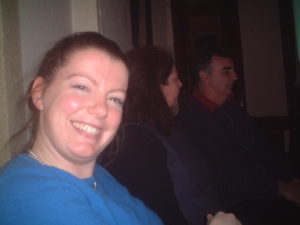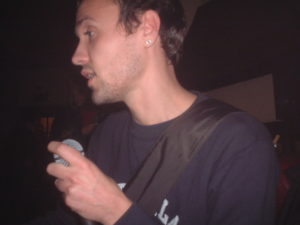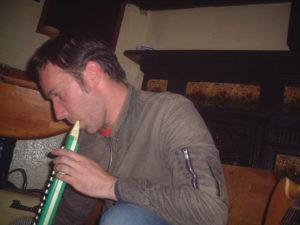Location:
Stags Head Pub (Upstairs Room) Dame Lane, Dublin, Ireland
Presenters:
Robert Praxmarer
Praxmarer is a highly educated computer science engineer, who decided in 1998 to join the AEC Futurelab. He is collaborating with traditional artists and emerging media artists. He uses the Futurelab as a platform to create his own artworks and to expand his knowledge in science and technology. His work is very concept orientated both in a technical and artistic way. He had various exhibitions and received national creative programming awards. In 1993 he participated in the Olympiad in Informatics and recently received an honorary mention from UNESCO. Now he focuses on the idea of representing the user in the artwork, and using spectators as a interface.
Robert will discuss his current projects and work, including videos of his work (t)error which is a mixed reality anti-war game. He will discuss his ideas on media art and his extensive work in the Ars Electronica Futurelab. He will also cover his ongoing projects, a cycle of 7 art works called “lumen profundi”.
URL: http://www.servus.at/cubic EMAIL: cubic(at)fl.aec.at
Lee Welch
Lee Welch is an American artist from Louisville, KY, he was born in 1975. He studied at the Academy of Art College San Francisco, CA. He has exhibited internationally in solo and group shows. His work is held in private and corporate collections. Lee has resided in Dublin for the past two years and has exhibited in the Goethe Institut Inter Nations, Signal Art Centre, and Tripswitch. He currently is doing the Folkatronica residency at SSI and will exhibit “audiomation” in Crawford Open 04 in December 2003.
audiomation
This project consists of transforming pixelated images into sound organised through time and space. Logics interface is utilised to mimic the compositions. Thereby creating the parameters of when to play and for how long. Like composers instructing on tonal and dynamic parameters, and the players are like the software. This method allows the transformation of visual data into an audio score. The pixels hue within the image will determine the tone of each sample. The piece’s size and quantity of pixels will result in the length of the score.
Mads Haahr
Mads Haahr is a multidisciplinarian who teaches computer science in Trinity College and edits a peer-reviewed academic electronic journal (crossings.tcd.ie) that explores the areas where technology and art intersect. His research in Trinity is in the area of ubiquitous computing, mobile computing and emerging Internet applications. He also takes photographs, sculpts and gives away true random numbers on the Internet (www.random.org). His work has been in the New York Times, on BBC World News and on radio stations across four continents.
Smart Psychiatric Couch
The Distributed Systems Group in Trinity College has recently acquired a psychiatric couch which now resides in one of our labs. We have augmented the couch with sensors in the form of load cells (weight indicators) under its four legs. This allows the couch to detect who is lying on it and possibly what they are doing. The couch also has its own CPU and can be programmed. We are just now starting to develop a number of applications for it. Examples are a personalised jukebox, news service and an interactive psychiatrist that will converse (through a voice interface) with the person on the couch about their love life, thesis and whatever else is on their mind.
Karl Him
“Interested in both acoustic and electronic music the work I produce is a reflection of this. In some pieces, acoustic and electronic forms combined to make ambient works. Others form clicks and abstract sounds to construct melody. Recording from everything and anything…”
URL: http://www.spitroastproductions.com/artists/karl.html


















